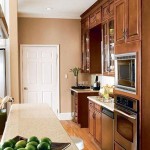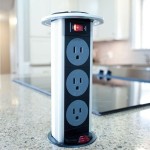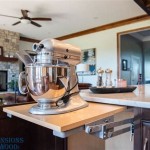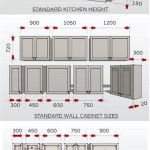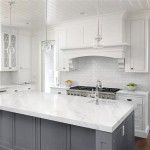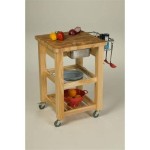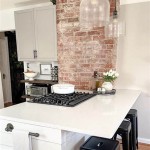Plate Racks For Kitchen Cabinets: Organization and Efficiency
Plate racks, also known as dish racks or dish organizers, are fixtures designed for the storage and drying of plates, bowls, cups, and other kitchenware. When integrated into kitchen cabinets, these racks offer an organized and space-saving solution for efficient kitchen management. They are available in a variety of materials, sizes, and configurations to suit different kitchen styles and storage needs. This article provides an overview of plate racks for kitchen cabinets, exploring their different types, benefits, installation, and maintenance considerations.
The primary function of a plate rack within a kitchen cabinet is to provide designated storage for clean dishes, preventing clutter and improving accessibility. By keeping plates neatly stacked and readily visible, one can streamline meal preparation and cleanup processes. Furthermore, integrated plate racks help to protect dishes from damage by preventing them from shifting or falling during cabinet use. The implementation of a plate rack contributes to extending the lifespan of dishware and maintaining an organized kitchen environment.
Types of Plate Racks
Plate racks for kitchen cabinets are available in several distinct types, each offering unique features and benefits. The selection of an appropriate plate rack depends on factors such as cabinet size, storage capacity requirements, and aesthetic preferences.
Wire Plate Racks: These racks are typically constructed from coated wire and are favored for their affordability and lightweight design. They are easy to install and offer good ventilation, allowing dishes to dry quickly. Wire plate racks are generally suitable for storing lightweight dinnerware, such as everyday plates and bowls. However, they may not be as durable as other types and could potentially bend or warp under heavy loads.
Wooden Plate Racks: Constructed from solid wood or wood composite materials, these racks offer a blend of functionality and aesthetic appeal. Wooden plate racks can be stained or painted to match existing cabinet finishes, contributing to a cohesive kitchen design. They are more robust than wire racks and can support heavier dishware. Certain wooden plate racks feature adjustable slots or pegs, allowing for customization of storage configurations.
Adjustable Plate Racks: These versatile racks offer flexibility in storage options. Often constructed from metal or durable plastic, adjustable plate racks feature movable dividers or shelves that can be configured to accommodate various sizes and shapes of dishware. This adjustability makes them suitable for households with diverse plate collections or those who require adaptable storage solutions. The ability to customize the rack's layout can maximize space utilization within the cabinet.
Pull-Out Plate Racks: These racks are specifically designed to slide in and out of kitchen cabinets, offering convenient access to stored dishes. Pull-out plate racks are often constructed from heavy-duty metal and feature smooth gliding mechanisms for ease of use. They are particularly beneficial for individuals with limited mobility or those who prefer to avoid reaching deep into cabinets. Pull-out designs often maximize vertical space within the cabinet.
Vertical Plate Dividers: These are not strictly racks but serve a similar organizational purpose. Vertical plate dividers are spaced evenly within a cabinet, creating individual slots for plates to stand upright. This prevents stacking and minimizes the risk of chipping or breakage. Vertical dividers can be made from wood, metal, or plastic and often are installed permanently within the cabinet’s interior.
Integrated Plate Racks: These racks are designed as a fixed element of the kitchen cabinetry itself. Often found in high-end custom kitchen designs, integrated plate racks are seamlessly incorporated into the cabinet structure. They may be constructed from a variety of materials, matching the overall cabinet design and providing a tailored storage solution. Integrated racks often provide optimal space utilization and aesthetic consistency.
Benefits of Using Plate Racks
The integration of plate racks into kitchen cabinets provides numerous benefits, contributing to a more organized, efficient, and aesthetically pleasing kitchen environment. These benefits extend beyond mere storage, impacting dishware maintenance and kitchen workflow.
Enhanced Organization: Plate racks create designated spaces for dishes, preventing clutter and disorganization within kitchen cabinets. By separating plates, bowls, and other items, they facilitate easy access and reduce the likelihood of items being misplaced or damaged. A well-organized plate rack contributes to a streamlined meal preparation and cleanup process, saving time and effort.
Space Optimization: Plate racks maximize the use of available space within kitchen cabinets. By providing a structured storage system, they prevent dishes from being haphazardly stacked, which can waste valuable space. The use of vertical space is particularly important in smaller kitchens where cabinet space is limited. Pull-out and adjustable plate racks further enhance space optimization by allowing for customized storage configurations.
Protection of Dishware: Plate racks help to protect dishes from damage by preventing them from shifting or colliding during cabinet use. The individual slots or compartments within a plate rack minimize the risk of chipping, scratching, or breakage. Furthermore, by keeping dishes neatly stacked, plate racks reduce the need to handle them excessively, further minimizing the risk of damage. This protection ultimately extends the lifespan of dishware and reduces the need for frequent replacements.
Improved Hygiene: Plate racks, particularly those made of wire or materials with good ventilation, promote air circulation around the dishes, allowing them to dry quickly and thoroughly. This reduces the risk of moisture buildup and the growth of bacteria or mold. Keeping dishes properly dried before storage is essential for maintaining kitchen hygiene and preventing foodborne illnesses. The design of many plate racks also facilitates easy cleaning, further contributing to a hygienic kitchen environment.
Aesthetic Appeal: Plate racks can contribute to the overall aesthetic appeal of a kitchen. Wooden plate racks, in particular, can add a touch of warmth and elegance to kitchen cabinets, especially when stained or painted to match existing decor. Even wire or metal plate racks can be chosen to complement the overall kitchen style, contributing to a cohesive and visually pleasing design. The orderly arrangement of dishes within a plate rack also contributes to a sense of cleanliness and order, enhancing the overall appearance of the kitchen.
Installation and Maintenance
The installation and maintenance of plate racks for kitchen cabinets are relatively straightforward processes, but careful attention to detail is necessary to ensure proper function and longevity. Selecting the correct size and type of rack, along with following best practices for installation and regular cleaning, will maximize the benefits of this kitchen organization tool.
Installation: The installation process varies depending on the type of plate rack being installed. Wire and wooden plate racks typically require simple mounting hardware, such as screws or nails, to secure them to the cabinet walls or shelves. Adjustable and pull-out plate racks may require more complex installation procedures, involving the attachment of sliding mechanisms and support brackets. It is important to carefully follow the manufacturer's instructions and use appropriate tools for the installation process. Proper alignment and secure mounting are essential to ensure the rack functions smoothly and can support the weight of dishes without collapsing or shifting.
Cleaning: Regular cleaning is essential for maintaining the hygiene and appearance of plate racks. Wire and metal plate racks can be easily cleaned with soap and water. For more stubborn stains or residue, a mild abrasive cleaner can be used. Wooden plate racks should be cleaned with a damp cloth and a gentle cleanser, avoiding excessive moisture that can damage the wood. Pull-out plate racks should be cleaned regularly to remove any food particles or debris that may accumulate in the sliding mechanisms. Ensuring the rack is thoroughly dried after cleaning helps prevent water spots and potential corrosion. Regular cleaning not only maintains the rack's appearance but also prevents the buildup of bacteria and mold.
Weight Capacity: It is crucial to consider the weight capacity of the plate rack before loading it with dishes. Overloading a plate rack can cause it to bend, warp, or even collapse, potentially damaging the dishware and the cabinet itself. Consult the manufacturer's specifications to determine the maximum weight limit for the specific rack being used. Distribute the weight evenly across the rack to prevent localized stress on any particular area. Avoid storing extremely heavy items on plate racks that are not designed to support them.
Material Considerations: The choice of material for a plate rack should be based on factors such as durability, moisture resistance, and aesthetic appeal. Wire racks are generally affordable but may be prone to rust or corrosion in humid environments. Wooden racks offer a more aesthetically pleasing option but may require more maintenance to prevent warping or damage from moisture. Metal racks, particularly those made of stainless steel, offer a good balance of durability and moisture resistance. Consider the climate and the level of humidity in the kitchen when selecting the appropriate material for a plate rack.
Cabinet Compatibility: When choosing a plate rack, ensure that it is compatible with the dimensions and construction of the kitchen cabinets. Measure the interior dimensions of the cabinet carefully to determine the maximum size of the plate rack that can be accommodated. Consider the location of hinges, shelves, and other obstructions within the cabinet. For pull-out plate racks, ensure that there is sufficient clearance for the rack to slide in and out smoothly. Selecting a plate rack that is properly sized and compatible with the cabinets will ensure a seamless integration and optimal functionality.

Diy Inside Cabinet Plate Rack Remodelando La Casa

13 Ways To Add A Plate Rack Your Kitchen

Solid Wood Oak Plate Rack Kitchen Racks Cabinets

Dish Racks Traditional Other Metro Itb Kitchen Wardrobe Manufacturer Furniture Design Diy Storage

Add Plate Racks To Your Kitchen Cabinets Premium

Diy Inside Cabinet Plate Rack Remodelando La Casa

Kitchen Cabinet Accessories Stainless Steel Built In Dish Tray Plates Drying Storage Rack And Drip Price Made Com

13 Ways To Add A Plate Rack Your Kitchen

Bringing Back A Classic 25 Trendy Ways To Add Plate Rack Decoist

A Spring Inspired Kitchen Country Designs Plate Racks In Diy Storage

